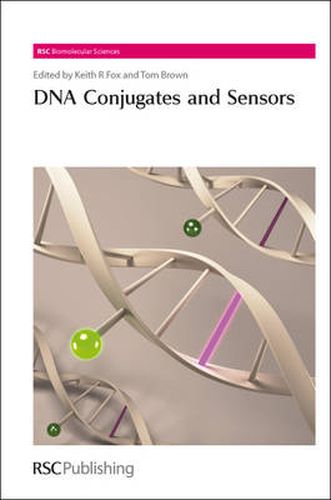Readings Newsletter
Become a Readings Member to make your shopping experience even easier.
Sign in or sign up for free!
You’re not far away from qualifying for FREE standard shipping within Australia
You’ve qualified for FREE standard shipping within Australia
The cart is loading…






Applications of nucleic acids have developed recently to provide solutions for biosensors, diagnostic tools and as platforms for the assembly of complex structures. These developments have been possible as their base sequence can be used to assemble precise structures following simple and predictable rules. Self-assembled DNA can then be amplified using polymerase chain reaction (PCR) and this ultimately enables the preparation of synthetic nucleic acids. Their use as molecular tools or DNA-conjugates has recently been enhanced by the addition of other groups including enzymes, fluorophores and small molecules. Written by leaders in the field, this volume describes the preparation and application of these DNA-conjugates. Several have been used as sensors (aptamers, riboswitches and nanostructures) based on the ability of nucleic acids to adopt specific structures in the presence of ligands, whilst others link reporter groups such as proteins or fluorophores to RNA or DNA for detection, single molecule studies, and increasing the sensitivity of PCR. The book is relevant to researchers in areas related to analytical chemistry, chemical biology, medicinal chemistry, molecular pharmacology, and structural and molecular biology.
$9.00 standard shipping within Australia
FREE standard shipping within Australia for orders over $100.00
Express & International shipping calculated at checkout
Applications of nucleic acids have developed recently to provide solutions for biosensors, diagnostic tools and as platforms for the assembly of complex structures. These developments have been possible as their base sequence can be used to assemble precise structures following simple and predictable rules. Self-assembled DNA can then be amplified using polymerase chain reaction (PCR) and this ultimately enables the preparation of synthetic nucleic acids. Their use as molecular tools or DNA-conjugates has recently been enhanced by the addition of other groups including enzymes, fluorophores and small molecules. Written by leaders in the field, this volume describes the preparation and application of these DNA-conjugates. Several have been used as sensors (aptamers, riboswitches and nanostructures) based on the ability of nucleic acids to adopt specific structures in the presence of ligands, whilst others link reporter groups such as proteins or fluorophores to RNA or DNA for detection, single molecule studies, and increasing the sensitivity of PCR. The book is relevant to researchers in areas related to analytical chemistry, chemical biology, medicinal chemistry, molecular pharmacology, and structural and molecular biology.